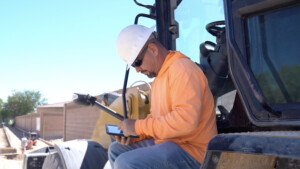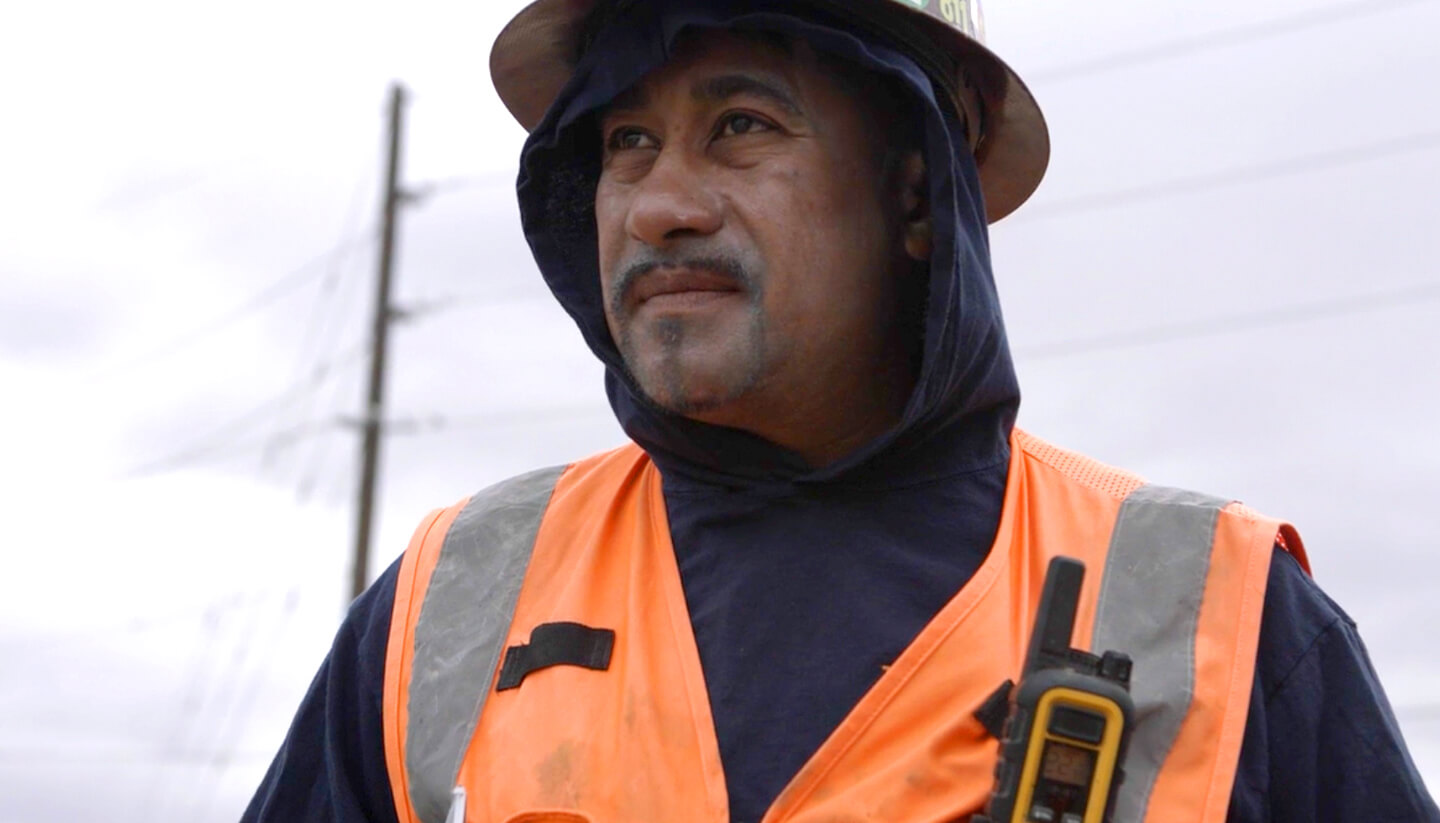If 2022 was a piece of construction equipment, what would it be? The world needed a motor grader to level things out and bring about normalcy—but what did we get? A bulldozer. After years of shutdowns and uncertainty, last year was supposed to level out and bring normalcy back to the world. Instead, it broke up a lot of solid foundations.
You’ve braved challenges and opportunities, from labor shortages to new environmental requirements and advancing technology. But for better or worse, the tradition-favoring construction industry faced shake-ups that you’ll feel well into the new year.
While we’re no fortune-tellers, we spoke with Assignar CEO and Co-Founder Sean McCreanor and pulled from the top industry reports to identify what you should expect for 2023.
The big takeaway? Things are changing. Quickly. Here are the top trends in the construction industry—and some tips on embracing them to prepare for the coming year.
“Construction leaders are not worried about the recession," says McCreanor, "They’re worried about how to deliver on the work. We’ll be out of a recession before they know it happened.”
Trend #1: Preparing for the infrastructure boom
The rest of the world is bracing for a downturn, but that’s the last thing on your mind. In 2023, the construction industry will see an increase in work coming its way—especially in the infrastructure sector.
Sean predicts it won’t be about getting work—it’ll be about keeping up with it.
“Construction leaders are not worried about the recession,” he says. “They’re worried about how to deliver on the work. We’ll be out of a recession before they know it happened.”
Where’s this work coming from? A few places:
1. The pandemic backlog
While global shutdowns are (mostly) a thing of the past, the construction industry hasn’t had the chance to catch up. The Associated Builders and Contractors (ABC) Backlog Indicator showed a backlog of 9.2 months in November—the longest one since the second quarter of 2019. According to ABC, demand in the commercial and institutional sectors is the main driver.
2. The infrastructure boom
The $1.2 trillion Infrastructure Investment and Jobs Act, signed into law in November 2021, will have a long-lasting impact on the construction industry. Here’s what that money will go toward:
- $110 billion on roads and bridges
- $73 billion on electric grid improvements
- $7.5 billion on charging stations and other electric vehicle infrastructure
The U.S. hasn’t spent this much on infrastructure in decades, and the construction industry will likely feel the increased workload for years. Right now, it feels like more work than the industry can handle.
There’s little doubt that another boom is coming, so now’s the time to prepare. Figure out how to win more bids and execute the upcoming projects. Think about improving on these three aspects of your business.
- Use technology to maximize your utilization of people and equipment.
- Increase productivity by streamlining systems and processes.
- Create an accurate budget and timeline estimates and feature them in your bids.
Trend #2: Doubling down on sustainability
As the climate crisis increases, more organizations are embracing green initiatives. Whether mandated by local government agencies or requested by clients, construction companies have to adopt environmental practices and put them front and center.
When discussing environmental, social and corporate governance (ESG) policies, Sean says more owners will recognize the cause and effect of those policies.
“There’s more recognition of having the right ESG policies in place,” Sean says. “[Owners are] thinking not just about the assets and efficiency, but the future state and the next generations that will own these assets. Are they energy efficient? Are they carbon-neutral? Are they assets that we can be proud of owning?”
LEED, the most widely used green building rating system, has seen a recent uptick in certifications. In the first three quarters of 2022 alone, over 5,000 construction projects were LEED-certified, according to the U.S. Green Building Council. While it’s not the only indicator of more sustainable practices, it’s a good predictor of what’s to come.
Here are two ways sustainability will impact construction in 2023:
1. Working with modular construction
Modular designs are more popular than ever. They’re cost-effective and help reduce construction’s environmental impact.

Modular design’s not just for residential anymore either—it’s now on the rise in
commercial design and infrastructure. Workers build concrete girders, pre-cast concrete and other elements in a warehouse and put them together on-site.
While modular construction is still on the fringe of the construction industry, it’s gaining popularity for several reasons:
- It requires fewer site deliveries than traditional construction, significantly decreasing fuel usage.
- There’s more control when building modular pieces in a warehouse. You don’t have to worry about weather delays, permits or scheduling until you get to the actual site.
- It minimizes safety risks on the job site since there are fewer moving pieces.
- It’s more efficient.
- There’s less waste overall. Modular elements can even be dismantled and rebuilt in different locations.
2. Meeting and reporting on environmental emissions
With more awareness of environmental impacts—and more building owners embracing ESG initiatives—contractors can expect to increase their emissions regulations and subsequent reporting.
Meeting these standards and guidelines has impacted everything from waste management to types of equipment. Sean believes that’s why you see nearly new equipment on job sites.
“You’ll see a lot of brand new equipment or well-maintained equipment. That’s because the old smoky machine from 20 years ago is just not going to cut it,” he says.
Waste management is also a big concern when updating infrastructure. When digging up old railways or replacing bridges, there are many unsafe materials that can’t go into a landfill. In 2023, you can expect more accountability. Owners will need to build the meeting and reporting of ESG goals into contracts.
How to manage green goals: Meeting sustainability goals requires more real-time oversight of the job site. Tracking your emissions and being proactive with reporting can also be a competitive advantage. Using construction management software like Assignar can help you track ESG goals down to the smallest detail, including:
- What type of machine you used
- How many hours it was on the job site
- How much fuel you used
- What type of fuel you used
- What kind of emission controls the device has
Trend #3: Harnessing data and digitization
Digital transformation in the construction industry isn’t new, but you can expect more technological leaps in the coming year. Now, tech adoption doesn’t end with construction companies. Tech has trickled down, and contractors are leveraging their own technology, too.
With more data inputs and wide-ranging digital advancements, you can expect a lot of digitization in the coming year.
1. Real-time visibility
Construction has a reputation: rarely on time or on budget. There are many potential reasons for overages and delays, but what makes it worse is the gap between when something happens and when it can be solved. Let us explain.

Most decision-making happens at the end of the day or week. Problems don’t make it from the job site to the back office in time to resolve issues without severely impacting the schedule and the budget.
But contractors have access to more data than ever, and 2023 will bring better visibility to the field. From sensors to applications to video, there are more ways to see what’s happening on the job site, allowing contractors to make “just in time” decisions. This can help keep jobs moving and keep them from going over budget.
2. Streamlining productivity
Contractors are looking for ways to do more with less. Higher-priced materials and a tight labor market mean you have to find creative ways to complete jobs and still turn a profit.
In the coming year, expect more contractors to adopt technology that promises efficiency and productivity. Assignar’s platform helps contractors maximize crew utilization, track productivity and collect data for faster decisions.
3. 3D printing
Throughout 2023, we’ll likely see a significant increase in 3D printing in multiple construction sectors. Not just for recreational use, 3D printing can produce items from entire houses (similar to modular construction) to replacement parts for large equipment.
While it’s still relatively new, it has strong potential in construction applications. We’ll likely see a significant increase in 2023 because of its many benefits:
- Speed. Traditional construction methods can be slow and labor-intensive, but 3D printing allows for the creation of entire buildings or infrastructure components in a fraction of the time.
- Precision. Gone are the days of being limited to standard shapes and sizes. 3D printing lets you create unique and intricate structures that would be difficult or impossible to achieve with traditional methods.
- Sustainability. Many 3D printing materials consist of recycled or sustainable sources, and the ability to precisely control the amount of material used in construction results in less waste. Plus, just like with modular designs, the reduced need for transportation of materials to construction sites helps reduce a project’s carbon footprint.
- Safety. Because the 3D printing process is largely automated, there’s less need for human workers to be onsite, potentially reducing the risk of accidents.
4. Autonomous vehicles
While fear of automation plagues many industries, construction is embracing it. The technology is maturing, and many operators are now required to learn how to supervise autonomous excavators, dozers, loaders, etc. Now, operators that would be sitting in the cab are standing by and watching the equipment work. Sean predicts this will help the industry in more ways than one.
“I think it’s going to attract people to come work in the industry,” Sean says. “There’s a much more sophisticated use of technology that should attract and appeal to future generations.”
As autonomous vehicles mature, expect fewer errors and less human labor.
5. Robotics and automation
We’re not yet seeing what’s happening in the movies. No one’s walking about in Iron Man suits and exoskeletons. But you’ll see robotic arms with drills on scissor lifts, where the worker supervises where the holes go instead of physically holding the 30lb drill.
Robotics and automation are revolutionizing the construction industry. Here are just a few benefits of this technological advancement.
- Increased safety: By having machines handle potentially hazardous tasks, you decrease risk on construction sites.
- Improved quality and consistency: Robots perform tasks with high precision and repeatability, leading to a better end product.
- Reduced physical strain on workers: Automation allows workers to use their knowledge and experience differently, potentially extending their careers in construction.
- Greater inclusion: The use of machines may encourage more people to enter the construction industry because they can reduce the minimum physical strength requirements.
- Enhanced efficiency: By augmenting the work of humans with machines, you complete construction projects with less human effort and higher efficiency.
While still in its early stages, the integration of robotics and automation in construction will expand in the coming years.
Where to start embracing technology: Where you begin depends on where you are on the road to digitization. If you’re taking the next step from pen and paper or basic spreadsheets, choose digital tools to enhance your current processes. Assignar takes what you do and helps you do it easier and faster.
But don’t sleep on more advanced digital initiatives. While the entire industry may not go autonomous this year, 2023 will be a stepping stone toward technological advancement.
Lead the charge in the construction industry’s growth
Now’s the time to prepare for the coming trends that will shake up the construction industry in 2023. Despite the challenges and changes of the past year, the boom in infrastructure and rise of construction tech solutions has the construction industry poised for growth.
Meet each trend head-on with Assignar. Simply give your existing team access to the technology and watch them do their work faster and easier.







